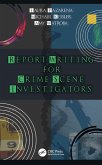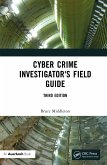Crime mapping and the spatial analysis of crime data are now recognized as powerful tools for the study and control of crime and the demand for detailed crime pattern analysis continues to increase. This book sets out methods used in Geographical Information Systems. It highlights best practices, examines the types of problems to which spatial crime analysis can apply, reviews the capabilities and limitations of existing techniques, and explores the future directions of spatial crime analysis and the need for training. The book focuses on a series of case studies that highlight the experiences of academics and practitioners in agencies centrally involved in the partnership approach to crime prevention.
Dieser Download kann aus rechtlichen Gründen nur mit Rechnungsadresse in A, B, BG, CY, CZ, D, DK, EW, E, FIN, F, GR, HR, H, IRL, I, LT, L, LR, M, NL, PL, P, R, S, SLO, SK ausgeliefert werden.









